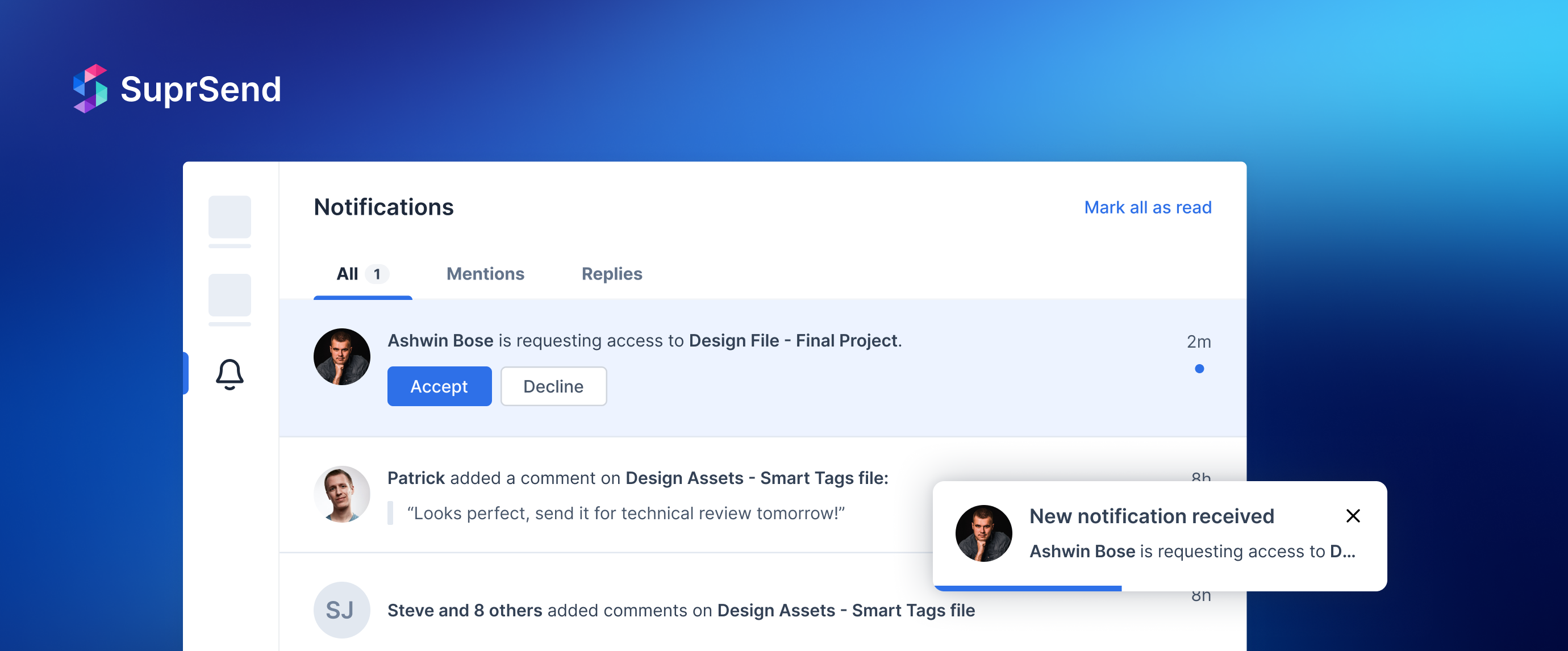A toast message, often referred to simply as a "toast", is a transient notification that appears briefly on the screen to provide users with information or feedback. These messages are typically displayed in a small, unobtrusive manner and automatically disappear after a short duration.
Origins:
The term "toast" in the context of software derives from the tradition of proposing short, congratulatory messages during gatherings or celebrations. In the digital realm, toast messages serve a similar purpose by delivering brief, congratulatory or informative messages to users.
.gif)
Use-Cases and Benefits of Toast Messages
Use-Cases:
Toast notifications find widespread application across various scenarios, including:
- Confirmation of actions or tasks completed by the user.
- Notification of system events or updates.
- Providing feedback on user interactions or inputs.
- Displaying alerts or warnings without interrupting the user flow.
Benefits:
- Timely Feedback: Toast messages provide immediate feedback to users, enhancing the responsiveness and perceived performance of an application.
- Non-intrusive: Unlike modal dialogs or pop-up notifications, toast messages appear briefly and do not disrupt the user's workflow.
- Space-Efficient: Due to their compact size and transient nature, toast messages occupy minimal screen real estate, making them ideal for conveying short, concise information.
Implementation Best Practices
You can implement a react native toast message using SuprSend.
Design Considerations:
- Clarity and Brevity: Keep toast messages clear, concise, and easy to understand to ensure effective communication with users.
- Visual Consistency: Maintain consistency in the design and appearance of toast messages to reinforce the app's brand identity and user experience.
- Accessibility: Ensure that toast messages are accessible to all users, including those with disabilities, by providing alternative means of notification where necessary.
Technical Considerations:
- Duration and Animation: Set an appropriate duration for toast messages to ensure they are visible long enough for users to read, but not so long as to become intrusive. Consider adding subtle animation effects to enhance visibility.
- User Interaction: Allow users to dismiss toast messages manually if desired, but ensure that they automatically disappear after a predetermined period to prevent cluttering the screen.
- Platform Compatibility: Implement toast messages using platform-specific APIs or libraries to ensure compatibility with different operating systems and devices.
Conclusion
Toast messages play a crucial role in modern application design, providing a lightweight and effective means of communicating with users. By understanding their definition, use-cases, and best practices for implementation, developers can leverage toast messages to enhance the user experience and drive engagement in their applications.
Whether you're designing an iOS/ Android mobile app, a react native web application, or a desktop application, incorporating toast messages into your UI can significantly improve usability and user satisfaction. With careful consideration of design and technical considerations, toast messages can become a valuable tool for delivering timely and relevant information to users.







